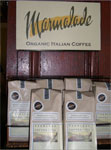BOTTLED WATER BACKLASH
Bottled Water's Days are Numbered, says leading Environmental Magazine

Bottled water is out, and tap water is in, says the May/June 2008 cover story of E – The Environmental Magazine (now posted at: www.emagazine.com). Call it reverse snob appeal. These days, it’s the tap water enthusiasts, concerned about the environment, who get to act self-righteous. Just like it has become cool to bring your own cloth bags to the grocery store and your own mug to the coffee shop, the reusable water bottle is the hip, new eco-accessory.
In Canada, the bottled water issue has reached the level of an “uprising.” College students are staging protests - declaring “bottled-water free zones” on campus. High school activists are raising questions about why their school board members are locking them into a contract with Coke or Pepsi (makers of Aquafina and Dasani bottled water) when they have access to drinking fountains for free. Some of the students have jokingly started selling bottled air for $1.
Perhaps Richard Girard, a corporate researcher for the Ottawa-based Polaris Institute, says it best. “This movement is gaining momentum because the general public is starting to figure out bottled water is a scam,” he says.
Bottled Waste
Bottled water is also contributing to huge amounts of waste and energy consumption. It takes 15 million barrels of oil per year to make all of the plastic water bottles in America, according to the Container Recycling Institute. Sending those bottles by air and truck uses even more fossil fuel. Once people drain the bottles, they rarely recycle them because they’re often purchased at big concert venues or airports with no recycling bins. CRI says eight out of 10 water bottles end up in the landfill. The bottles that drift from landfills or end up as litter in streams are washing out to sea to form a huge raft of plastic debris in the center of the Pacific that is estimated to be twice the size of Texas.
It takes 1,000 years for plastic bottles to break down, CRI estimates. States could add deposit bills that would increase recycling efforts, but few have taken the initiative.
Don't Refill the Bottle!
Consumers aren't advised to reuse store-bought bottled water, or even plastic bottles made for refilling due to dangers of leaching chemicals. Research shows that clear bottles made of polycarbonate plastic (such as the original 32-ounce Nalgene) can leach bisphenol-A (BPA), an endocrine disrupting chemical that acts like estrogen in the body. Since BPA has been linked to low sperm counts and an increased risk of breast and prostate cancer, scientists suggest avoiding reusable bottles made from plastic. They also raise serious concerns about the potential for other plastic chemicals to leach out of typical PET bottled water bottlesespecially if they sit in the hot sun.
Some of the best refillable bottle options come from the stainless guaranteed-not-to-leach SIGG bottles made in Switzerland. The trend away from bottled water may also boost sales of home filters. Water quality experts say most tap water is fine to drink straight from the faucet - especially in cities like San Francisco, Seattle, New York City and Denver, where water comes from pristine mountain reservoirs.
Turning Back to Tap
It makes sense for anyone turning back to tap to become educated about the local public water supply. And since the Environmental Protection Agency requires frequent water quality reports, the data is easy to find. The Environmental Working Group (EWG) makes it easy with its Tap Water Database. You can plug in your zip code and find out whether your local water system is up to par.
Now that more people are trying kick the bottled water habit, groups like Natural Resources Defense Council (NRDC) and EWG hope this new awareness will translate into more support for public water supplies, and for water conservation in general.
E – The Environmental Magazine distributes 50,000 copies six times per year to subscribers and bookstores. It’s website, www.emagazine.com, enjoys 600,000 monthly visitors. E also publishes EarthTalk, a nationally syndicated environmental Q&A column distributed free to 1,700 newspapers, magazines and websites throughout the U.S. and Canada (www.emagazine.com/earthtalk/thisweek). Single copies of E’s May/June 2008 issue are available for $5 postpaid from: E Magazine, P.O. Box 50032, Boulder, CO 80322. Subscriptions are $29.95 per year, available at the same address.

CELEBRATING 30 YEARS OF HARMONY
THE 30th ANNUAL
HARMONY FESTIVAL
Music * Art * Ecology * Healthy Living * Spirituality June 6th, 7th & 8th 2008 Sonoma County Fairgrounds
Santa Rosa, CA www.HarmonyFestival.com
DIVERSE AGENDA ANNOUNCED FOR
THE ORGANIC SUMMIT
Nanotechnology in food systems, domestic fair trade and food security to be discussed
The 2008 Organic Summit today announced its slate of speakers for its summer conference to be held in Boulder. The opening keynote speaker will be Daria Myers, global president of Origins Natural Resources. Closing the conference will be Seth Goldman, president and TeaEO of Honest Tea, and Michael Ohmstede, senior vice president of business development venturing and emerging brands at Coca-Cola North America.
In keeping with the theme, “Cultivating Innovation and Transparency in the Organic Community,” this year’s program includes discussion and debate on nanotechnology, domestic fair trade, developing a sustainability scorecard and social investing in organic. A leader-level working forum, The Organic Summit will offer plenary and breakout sessions, tours and special events for up to 250 industry leaders. The event will take place June 25-27, 2008, at the St. Julien Hotel and Spa. It is produced by New Hope Natural Media, a division of Penton Media, in partnership with the nonprofit Organic Farming Research Foundation (OFRF).
“This is a conference where the audience complements the program. We've made every effort to reflect the diversity of the organic community in putting this program together," said Bob Scowcroft, executive director of OFRF. “Now we are turning our attention to attracting an audience that reflects every corner of the organic universe as well," he added.
Opening keynoter Myers has had a much-celebrated career with the Estee Lauder Companies. She was a founding member of the team that created the wellness-based beauty brand Origins. Myers left Origins for three years, during which time she held senior positions at Aveda. She returned to Origins in 2002 and continues to be integral in the development of Origins Organics. Myers’ talk will address the changing corporate landscape and organic.”
Closing keynoter Goldman co-founded Honest Tea in 1998, introducing the first certified organic bottled tea. Today, Honest Tea’s entire product line is certified organic, and Honest Tea is the best-selling brand of bottled tea in the natural foods industry. Last year, Goldman launched Bethesda Green, a private-public partnership to promote sustainable living in Bethesda, Md., where Honest Tea is based. Joining Goldman at the podium will be Michael Ohmstede in a presentation titled “Maintaining the Integrity of an Organic Brand When Coca-Cola Calls.”
Other selected speakers include Andy Fischer, Community Food Security Coalition; Sonja Tuitele, Aurora Organic Dairy; Samantha Cabaluna, Earthbound Farms; Cate Baril, TransFair USA; Esther Park, RSF Social Finance; Dr Kater Hake, Cotton Incorporated; Joe Mendelsohn III, ICTA; Michael Hanson, Consumers Union; and Kristen Kulinowski, Rice University.
Other session topics planned for the 2008 event are:
- Organic on the Edge
- Lawyers Are Our Friends …Really
- Nanotechnology in a Food System Near You
- Speed D(eb)ating: Domestic Fair Trade
- Sustainability Scorecard
Sponsors to date of The 2008 Organic Summit are companies considered organic groundbreakers: Horizon Organic, SILK, Origins Organics, Albert’s Organics, Clover Organic Farms and Jacobs Farm–Del Cabo. For sponsorship information, visit http://www.theorganicsummit.com/promotions/index.cfm.
The Organic Summit returns for a second year to downtown Boulder with a compelling agenda of speakers, seminars, and special events, including the Fifth Annual OFRF Midsummer’s Eve Organic Benefit Reception and Dinner. To register, visit www.theorganicsummit.com.
DIABETES AND BLOOD PRESSURE Study: Doctors not always sure when to treat blood pressure in people with diabetes Even when pressure is high, uncertainty stems from ambiguous standards, competing demands and overlapping health problems, U-M/VA study finds For people with diabetes, high blood pressure poses a special threat, multiplying their risk of heart attacks, strokes and kidney problems. But a new study finds that even when people with diabetes show up in their doctor's office with a high blood pressure reading, there's only a 50-50 chance that each of them will get some sort of attention for it. That might mean a change to their medications, or a plan to follow up a few weeks later to see if the reading is still high. What happens the other 50 percent of the time? Something that others have termed "clinical inertia" takes over, say the University of Michigan Health System and VA Ann Arbor Healthcare System researchers who conducted the study, which is appearing in the May 20 issue of the Annals of Internal Medicine. The fear is that this lack of response to high blood pressure readings at clinic visits could mean that patients' pressures will keep getting worse. The study takes a look at possible causes of clinical inertia and finds little evidence supporting the idea that providers are just "ignoring" blood pressure problems. What really seems to have an impact on treatment decisions is plain old uncertainty about whether the blood pressure is really elevated, or providers being occupied with other medical issues. Providers might need to spend the visit addressing more pressing problems, some of which, like pain, may be contributing to elevated blood pressures. Or, they might take another reading and conclude there's no need for action. Or, patients may report that their pressure readings at home have been fine. More systematic guidelines for monitoring blood pressure in people with diabetes, and better guidance for when to change treatment when pressures get too high, are needed, say the researchers. They're led by Eve Kerr, M.D., MPH, and Timothy Hofer, M.D., M.S., of the Center for Clinical Management Research at the VA Ann Arbor Healthcare System and U-M Medical School's Division of General Medicine. In the meantime, says Kerr, "While there are many guidelines about treating hypertension, there is an amazing lack of clarity and guidance about how many blood pressures should be taken at a clinic visit, whether those blood pressures should be averaged or whether just the lowest should be used, and how to incorporate home blood pressure readings in decisions to intensify medications. As long as this confusion exists, we may not make progress in treating hypertension." The study was performed among 1,169 people with diabetes who were seen in VA primary care clinics over a one-year period, at nine different sites in three states.
All the patients had a blood pressure reading over 140/90 mm Hg at the start of their clinic visits. The national goal for people with diabetes is less than 130/80 mm Hg. (For people without diabetes or kidney problems, the goal is less than 140/90, which is considered the cutoff for Stage I hypertension.) Of these patients, 573, or 49 percent, received a change in their blood pressure treatment at the same clinic visit - either a new prescription for a medication, a change in the dosage of an existing medication or medications, or a documented plan to follow up within four weeks. While this rate is higher than has been reported in other settings, there still appears to be room for improvement. As part of the study, the researchers asked both patients and providers to complete brief questionnaires before the end of the day of the clinic visit. Most of the 92 providers who saw the patients were physicians, but they also included nurse practitioners and physician assistants. This prospective design allowed the researchers to look at all the different variables associated with providers' tendency to adjust blood pressure treatment in reaction to the high initial reading. Their analysis revealed findings that have implications for how patients, and clinicians, measure and react to blood pressure in clinics. For instance, there was wide variation among clinics in the likelihood that providers would order a treatment change in patients with a reading over 140/90 mm Hg. Uncertainty about what the patient's blood pressure was one of the largest factors. Providers variably repeated the blood pressure check once the patient was in the exam room, and not surprisingly were much less likely to change treatment if the new reading was lower than 140/90 mm Hg. Only 13 percent of such patients had a treatment change, compared with 61 percent of those with a high second reading, or who didn't get one. "Providers clearly 'trust' their own reading more than they do the reading taken at the clinic intake point," suggests Hofer. "But there is no evidence that supports that approach. In fact, the literature suggests that provider measurements are less reliable and subject to large biases relative to independent measures by nurses using electronic blood pressure cuffs." Additionally providers responded to their patient's own report about what kind of readings he or she was getting using a home blood pressure monitor. Only 18 percent of patients who told their providers their home measurements had been below 140/90 mm Hg received a treatment change, compared with 52 percent who said their pressures at home had been high, or who didn't report at-home monitoring. While at-home monitoring can be important, Kerr says, the fact of the matter is that there is no standard for how often to monitor and how to record home pressure readings over time. Further, patients might preferentially report only the "normal" blood pressures and ignore the out-of-range values. Patients should talk to their doctors about how often to monitor and record their blood pressure and look at averages over time, she says. If their average is above the target, it might be time to change treatment. Finally, another major factor interfering with a patient's chances of getting a treatment adjustment turned out to be somewhat predictable: attention to other issues. If a patient's chief reason for coming to the clinic was unrelated to their diabetes or their blood pressure - for instance, if they were seeking treatment for pain - they were much less likely to receive attention for their blood pressure. The same was true for clinic visits where a patient's medications weren't discussed. The team is continuing its study to see how long it takes for patients to get a treatment change. They hope their work will help guide further hypertension guidelines, and standardization of clinic practices. And that, they hope, will help millions of diabetes patients protect their long-term health. In addition to Kerr and Hofer, the researchers include Brian Zikmund-Fisher, Ph.D., Mandi Klamerus, MPH, Usha Subramanian, M.D., M.S., and Mary M. Hogan, Ph.D., RN. Funding for the study came from the VA, and from the Michigan Diabetes Research and Training Center. Reference: Annals of Internal Medicine, May 20, 2008, Vol. 148, No. 10.
EVERYTHING ORGANIC AT MARMALADE CAFE
 Healthy food is on everyone's mind these days, and the eclectic California restaurant group Marmalade Cafe has added Peerless Organic Coffee, packaged for their brand, along with organic eggs and the freshest fine produce. Organic coffee has become enormously popular in the past five to six years, with many producers taking the time and effort to develop their own unique organic blends, including Newman's Own, Dallis Coffee and a line-up of specialty coffee companies. For information on Marmalde Cafe visit www.marmaladecafe.com. Healthy food is on everyone's mind these days, and the eclectic California restaurant group Marmalade Cafe has added Peerless Organic Coffee, packaged for their brand, along with organic eggs and the freshest fine produce. Organic coffee has become enormously popular in the past five to six years, with many producers taking the time and effort to develop their own unique organic blends, including Newman's Own, Dallis Coffee and a line-up of specialty coffee companies. For information on Marmalde Cafe visit www.marmaladecafe.com.
|





